Portulaca is a plant with beautiful flowers that are edible. You might wonder if portulaca attracts pollinators like hummingbirds. We have researched this question and will lay out the answer for you in this post, so keep reading!
Portulaca is attractive to hummingbirds. This is probably due to the flower's high nectar content. The bright colors of the flower, especially the red ones, will also be attractive to hummingbirds.
As you will learn in this post, hummingbirds are not the only pollinators that portulacas attract. We'll also look at other flowers that hummingbirds are more attracted to than portulaca. We will discuss all of this and more in the next sections, so read on.
Does Portulaca Attract Hummingbirds?
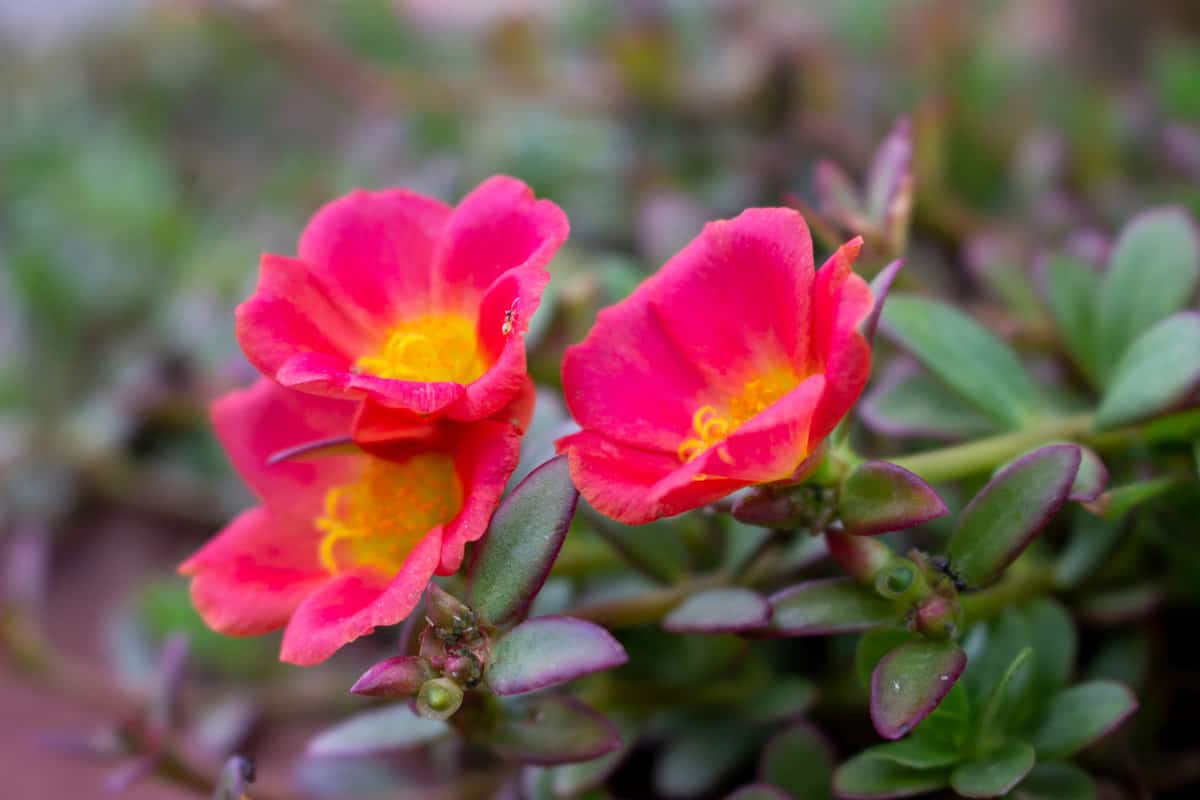
The portulaca has a number of qualities that will attract hummingbirds. Aside from its bright hue, it is a good source of nectar and easy for the birds to access. The portulaca usually grows up to eight inches tall and can serve as a ground cover.
Aside from producing a lot of nectar, portulaca grows in warmer weather and needs around six to eight hours of direct sunlight daily.
This is an ideal condition for hummingbirds, who need to maintain a constant body temperature of between 104 and 108 degrees F.
Hummingbirds, however, are not the main pollinator that portulaca attracts. Portulaca is more likely to be a pollination hotspot for honeybees instead.
Chickens are another animal that will happily consume your portulaca. They are known to eat every part of the plant: stems, leaves, and all.
How To Grow Portulaca
Portulacas are easy to grow in the right climate. Sometimes they are treated as nothing more than weeds, especially for their non-flowering stems.
Despite this, you can get a lot out of your portulacas with the right amount of care. Being a pollinator hotspot, portulaca will highly benefit an ecosystem that it's native to.
You should grow portulaca in fertile, well-draining soil. This means you can use soil types such as sandy loam soil since it does not hold as much water as other types.
Portulacas prefer slightly acidic soil, with a pH between 5.5 and 7.0. You can grow portulacas as a perennial in zones 10 and 11.
As mentioned, you should give your plants direct sunlight daily for at least six hours. They are drought intolerant though they need one inch of rain per week during the growing season.
You can probably go a long while without having to water your portulacas. If you are going to water your portulacas regularly, do so when the topsoil is dry. Since you will be using desert-like soil, the water should drain easily.
You can feed your portulacas with a liquid fertilizer every other week to encourage flower growth.
Aside from being a good groundcover, you can also grow portulacas in pots. When planted in pots, you can take some liberties with the type of soil you use as long as the pot is well-draining, but you should still use sandy loam or desert potting soil.
What Flowers Attract Hummingbirds?
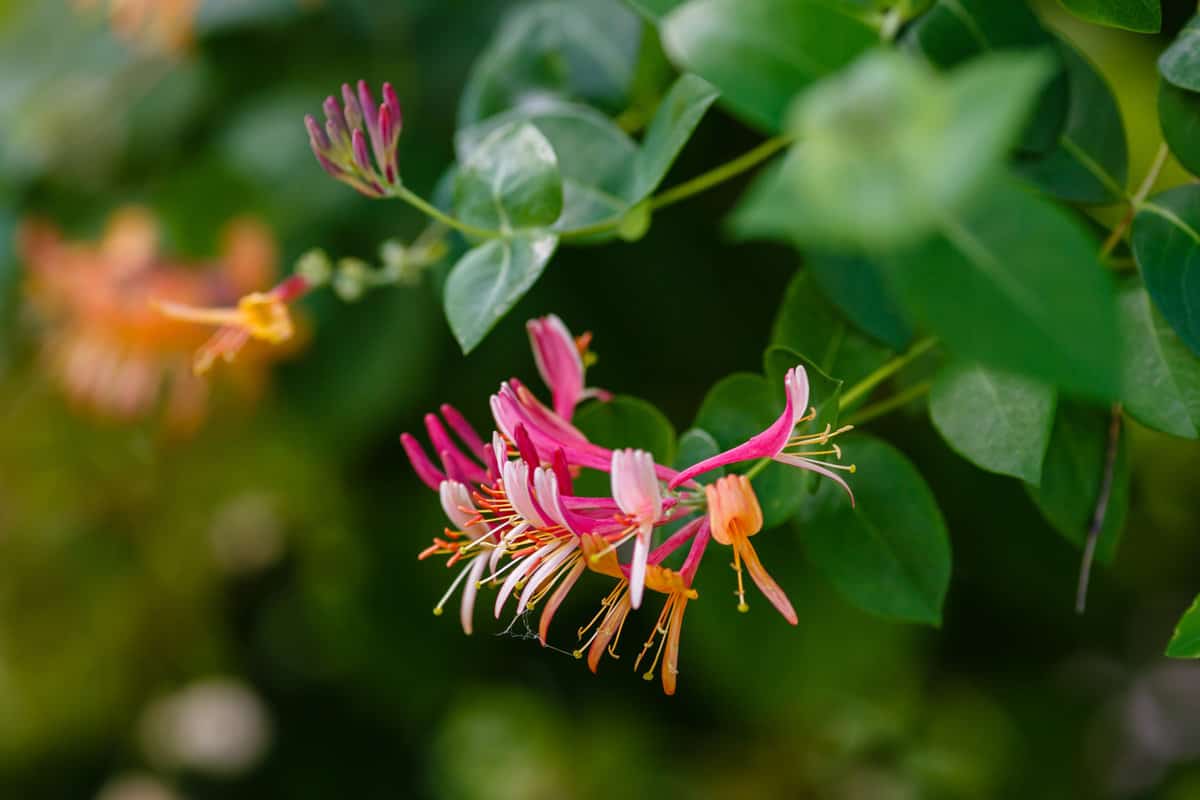
Most flowers that attract pollinators will also attract hummingbirds, although there are particular flowers that hummingbirds will be more attracted to.
Flowers with more tubular shapes have developed to be pollinated by hummingbirds specifically since these birds have longer beaks.
Hummingbirds love to pollinate red flowers. You can have red flowers or red portulacas in your garden to attract them. They are also drawn to aromatic plants. Here is a list of some familiar flowers that will attract hummingbirds:
- Honeysuckle
- Sunflowers
- Red Columbine
- Bee Balm
- Cardinal Flower
- Trumpet Flower
- Petunias
- Foxglove
- Catnip
- Aloe vera
- Iris
- Lily
This is just a selection of flowers—the complete list is even longer. Chances are you will also attract other pollinators with some of these flowers.
If you want to focus on hummingbirds, choose flowers that have a tubular shape. Some insects could be too big to reach into the nectar, so hummingbirds will take over.
What Is The Best Flower For Attracting Hummingbirds?
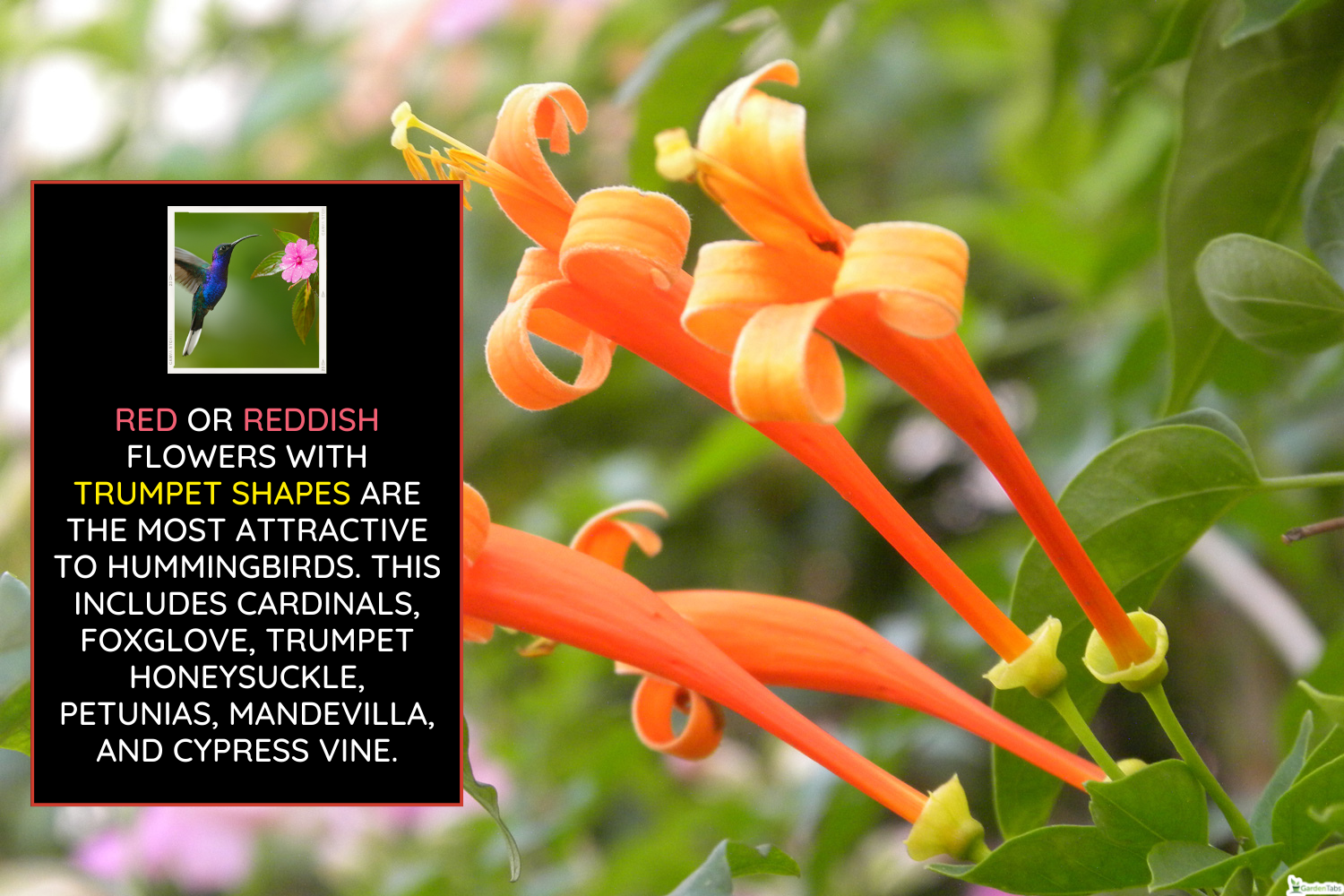
Of the flowers listed in the last section, some are more likely to attract hummingbirds than others. Hummingbirds will only pollinate during the day, so it is best to have flowers that bloom nicely in the daytime.
Red or reddish flowers with trumpet shapes are the most attractive to hummingbirds. This includes cardinals, foxglove, trumpet honeysuckle, petunias, Mandevilla, and cypress vine.
These flowers can grow in different regions and hardiness zones, so grow the ones native to your area.
Having a wide array of flowers to choose from means that you can be flexible with what you grow in your garden. When cultivating flowers, you are bound to have at least one type of flower that is attractive to hummingbirds.
Aside from the aesthetic benefits, it is important to grow flowers according to season. This way, you can make sure that your flowers can blossom well.
Additionally, it is easier to grow native plants since you will not have to worry about growing conditions.
A final thing to consider when using native plants to attract hummingbirds is that the pollinators will already have a taste for them. Ultimately, adapting to the needs of the ecosystem is a great way to have a sustainable garden that attracts pollinators.
You can look online to find which plants are native to your area.
How To Attract Hummingbirds
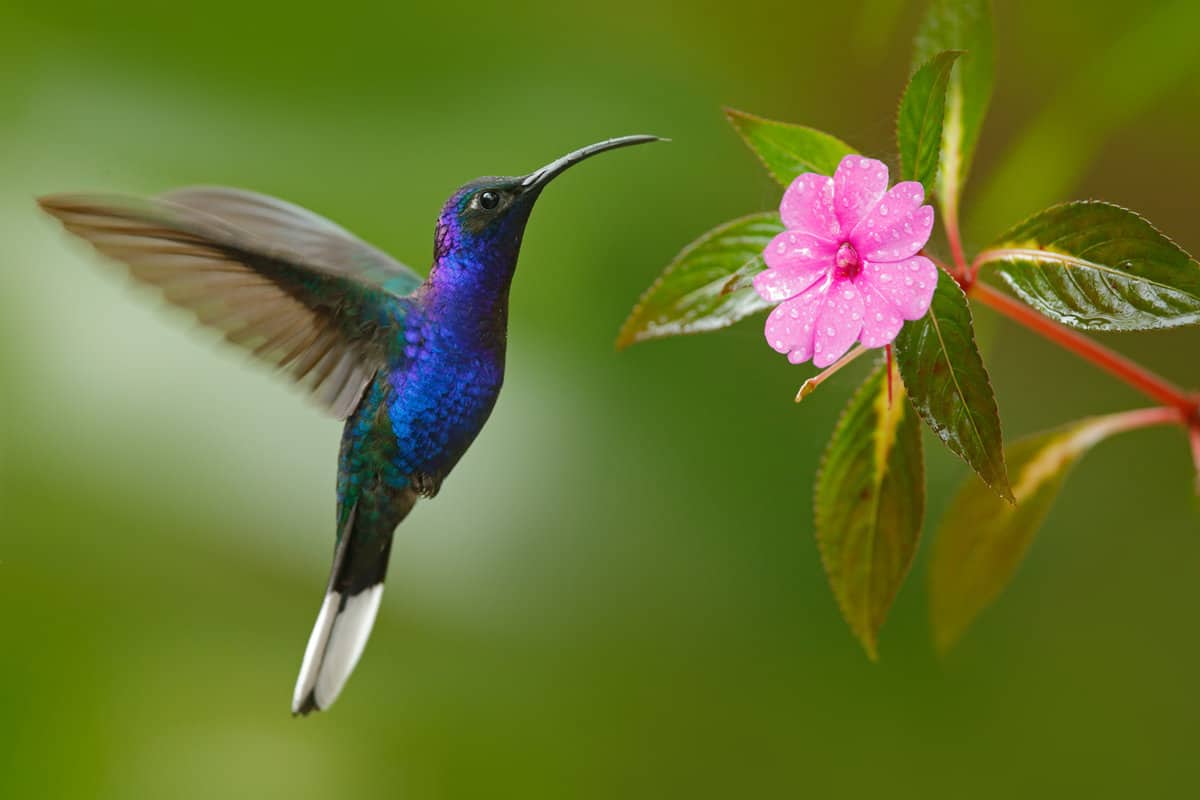
Aside from planting red flowers, there are many other ways for you to attract hummingbirds to your garden.
Hummingbirds like sugar because of the energy they need to move their wings. You can offer them sugar water in a secure location that only they can reach. You should replace it regularly so that it doesn't spoil.
Keep hummingbird food and sugar water safe from ants by creating ant moats around them. Hummingbirds will be able to fly up to reach the feeders, but the water will deter ants.
You may also benefit from tools that are bee resistant so that the hummingbirds have no competition.
You can use a feeder to keep the health of hummingbirds safe. Should the food or sugar water get moldy or spoil, you risk harming the hummingbirds. Like humans, these birds will get sick when eating from unsanitary feeders.
Click here to see this hummingbird feeder on Amazon
If you have a birdbath in your yard, it can help attract hummingbirds. Any birds around your garden will appreciate the source of fresh water.
Make sure to allow enough space for the hummingbirds. They do not appreciate crowding and can get quite territorial.
Click here to see this bird bath on Amazon.
How To Keep Your Garden Pollinator-Friendly
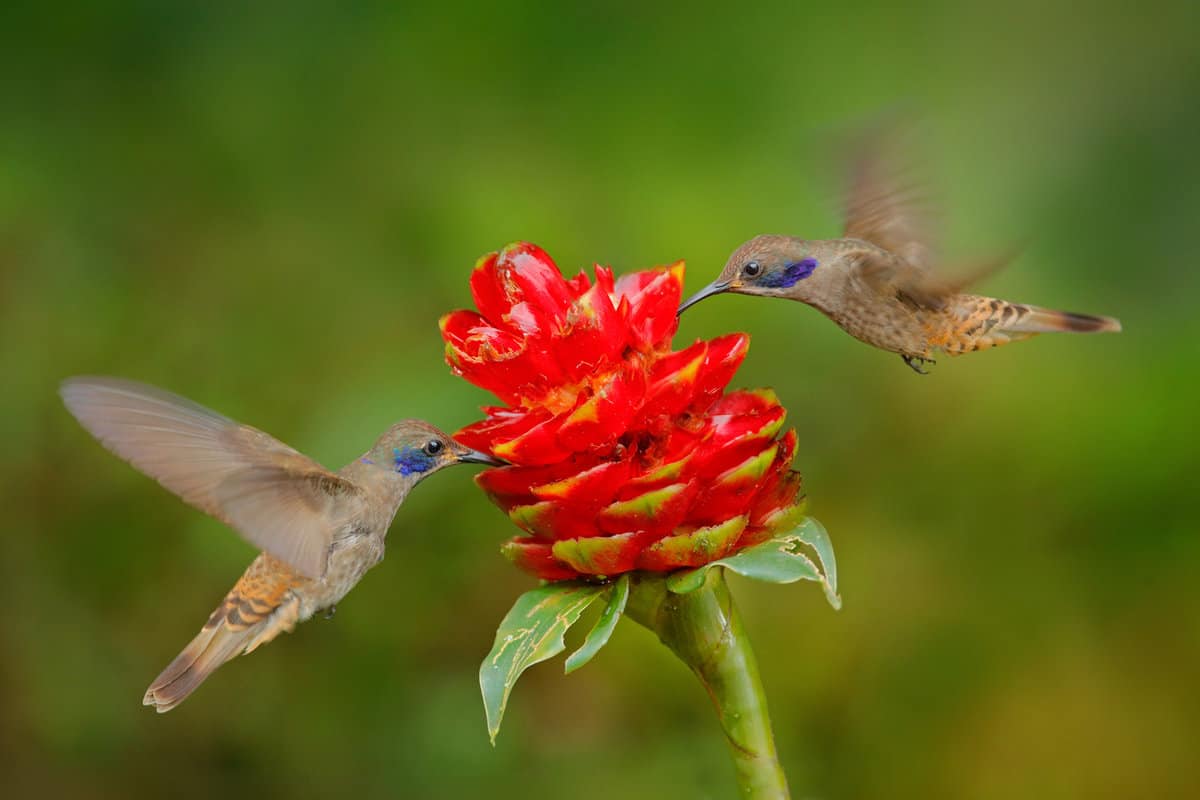
Pollinators like hummingbirds are important for the local ecosystem since they promote the growth of local species. They can reach vast spaces and even drop seeds in large areas.
Your garden will benefit greatly from the presence of pollinators, so you will want to have them around. Aside from hummingbirds, most other pollinators are insects. This includes bees, butterflies, beetles, flies, ants, and more.
One other bird that's a pollinator is the elephant shrew. Bats can also act as pollinators but only in particular areas and at certain times of the day.
Making your garden pollinator-friendly means providing the right habitat for pollinators local to your area.
You can do a bit of research on which pollinators you need to cater to and adjust the conditions of your garden by growing the right plants and making effective use of garden space.
You could also look into pollinator landscaping. This includes minimizing the use of pesticides and herbicides and getting rid of plants and structures that are harmful to pollinators.
Consider planting in clumps that are easy for pollinators to find. You should also cultivate a large variety of plants and take care of them well.
As with hummingbirds, you can leave out a shallow dish of fresh water for other pollinators like butterflies and bees. You can even give them an area to nest in.
A healthy garden can result in healthy pollinators and vice versa. While it is a lot of work in the beginning, a sustainable garden will eventually end up doing the work for you.
Wrapping Things Up
Portulacas, especially the red ones, attract hummingbirds. Hummingbirds love nectar-rich flowers with tubular shapes. It is easy to grow portulacas in warmer regions and in well-draining soil.
As for hummingbirds, there are a lot of flowers you can choose from to try and attract them. In addition to adding beauty to your garden, hummingbirds are great pollinators, so you will want to have them around.
By following a few steps, you can make your garden a friendly environment for every pollinator that comes to visit.
Did you find this article helpful? If you did, check out our other posts before you go!
What Is A Safe Paint For Metal Bird Baths? [3 Great Options To Choose From]
Do Marigolds Attract Bees & Butterflies [Yes! Tips For Planting In Your Yard]


